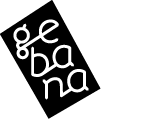How is cashew flour actually made?
We have had cashew flour in our product range for several years. It was introduced by Linda Dörig, the former managing director of gebana Burkina Faso. Her goal was to generate more value by selling this product. We wanted to find out more.
During her visit, Linda took the opportunity to speak with Talato Adèle ZABA, the head of Cashew Grading.

Talato Adèle ZABA, Head of the Cashew Grading Department
Linda Dörig: What exactly is cashew flour? How is it made?
Talato Adèle ZABA: There are cashew nuts or fragments that are stained or slightly wrinkled. Though this has no effect on taste, we can’t export them like this.
In order to sell the “flawed” cashews, we grind them. We take a large sieve, place the kernels or large fragments on it and process them with a kind of rolling wood. The little pieces that are separated out are useful since there is a market for them. The rest is put on an even finer sieve to obtain tiny pieces again. What then remains is called “ground cashew nuts” or “cashew flour”, which is called “mugu” in the local Dioula language.
But of course, the price for little or tiny cashew pieces and for cashew flour is lower than for whole nuts without any flaws. What is being done to prevent discards?
Our goal is to “produce” as few ground cashew nuts as possible, or even none at all. We try to get the most out of the cashew nuts and pieces based on international standards.
What do the Burkinabe do with cashew flour?
Not everyone here knows of this product, nor can it be bought everywhere. But here in the factory and in the surrounding area, everyone knows of it and likes it. We use it in many different dishes as a substitute for peanuts or in a mixture with peanuts – mixed because the cashews taste better, but they are also sweeter.
For example, we like to make cashew butter with it:
- Heat some oil and add the cashew flour
- Stir vigorously
- Then process it into a paste in the mixer
And there you have it: cashew butter! Our tip is to try spreading it on some bread – it tastes great!
Another popular way to use cashew flour is to make a sorrel sauce (note from Linda Dörig: sorrel leaves come from the hibiscus plant, but you can use spinach instead).
- Remove the thick stalks
- Boil the leaves in a pot of water
- Drain and rinse the leaves in a sieve
- Heat oil in a pan
- Fry meat and onion
- Add leaves
- Let simmer
- Add some cashew flour
There you have it! The dish is best enjoyed with tot (traditional corn staple food) or rice.
How does the sale of cashew flour benefit gebana Burkina Faso?
We sell the product locally for a very small, rather symbolic price. We have to throw away everything that we cannot sell or that becomes rancid – the shelf life of the flour is shorter than that of the kernel. Fortunately, since we started exporting cashew flour, this happens less often and we can generate more value from it.
The raw cashew nuts are more expensive in Burkina Faso than in the surrounding countries. It is also difficult to be competitive with Asian processing companies. The Asians have a market for the complete product from the peel to the oil, the skin and all nut sizes. Unfortunately, we don't have that. That means that we have to cover all costs with the exportable products. If we can sell more by-products, that will have a positive impact on our cost recovery.
Linda Dörig herself mainly uses cashew flour for baking.
For example, it can serve as an almond substitute in an almond cake:
- 6 eggs
- 1 pinch of salt
- 200 g powdered sugar
- 200 g ground cashews
- grated orange peel
- 2 packets of bourbon vanilla sugar
- 1 teaspoon cinnamon
- Icing sugar for dusting
Preheat the oven. Grease the baking pan. Separate the eggs. Beat the egg whites with salt until stiff. Mix the egg yolks with icing sugar until creamy. Add the orange peel, vanilla sugar and cinnamon. Incorporate the egg whites and cashew flour. Pour the batter into the mould. Bake in the oven at 175 °C (centre) for 35 minutes. Remove from the mould when it has cooled slightly, then let it cool on a wire rack. Generously sprinkle with icing sugar before serving.

It can also be used when baking bread. Just replace part of the wheat flour with cashew flour. Since the cashew flour releases moisture, the amount of water can be reduced a little. Linda’s tip: Start with a little flour and, if you like the taste, add more the next time you bake bread.

 Login
Login





